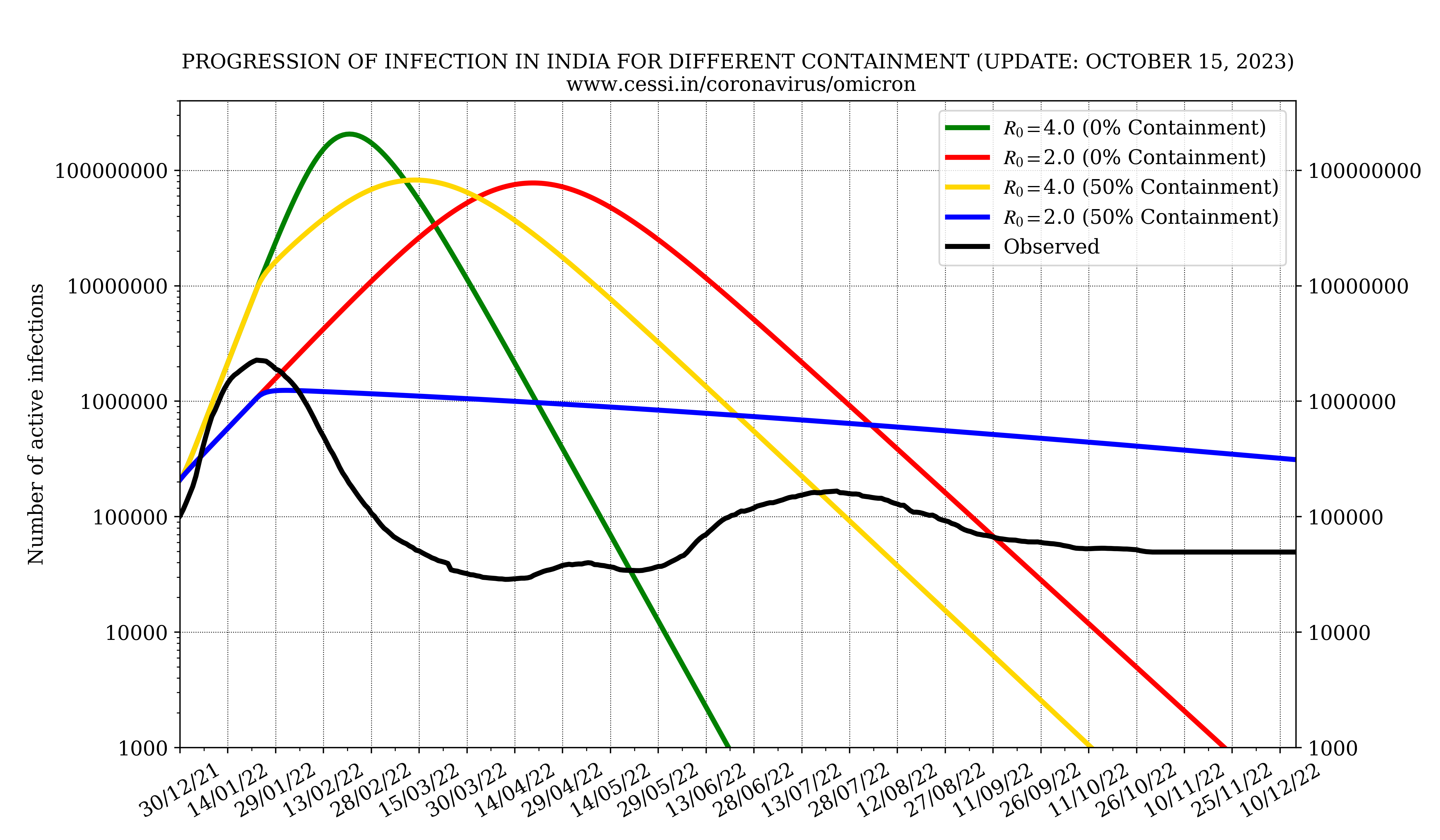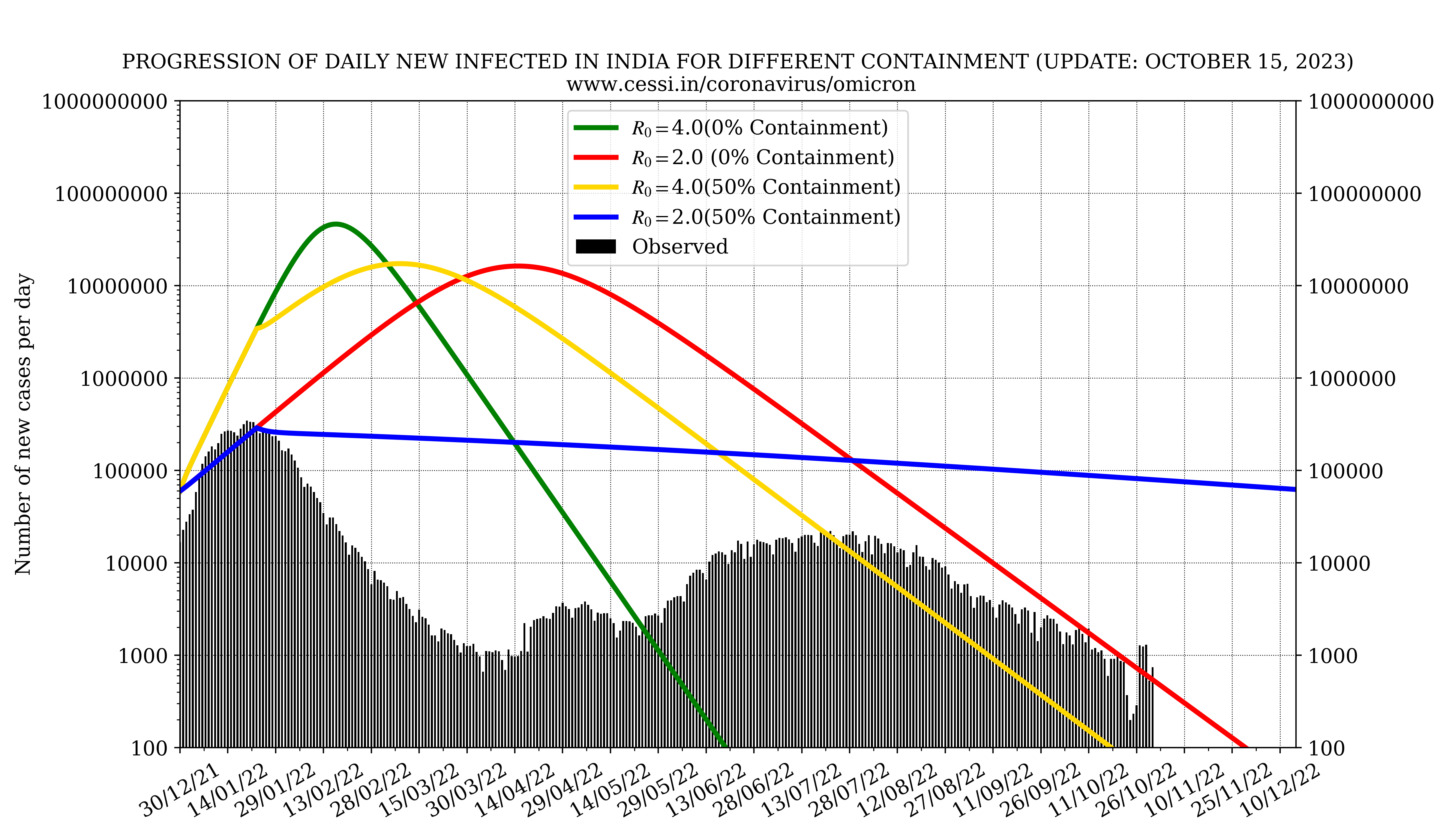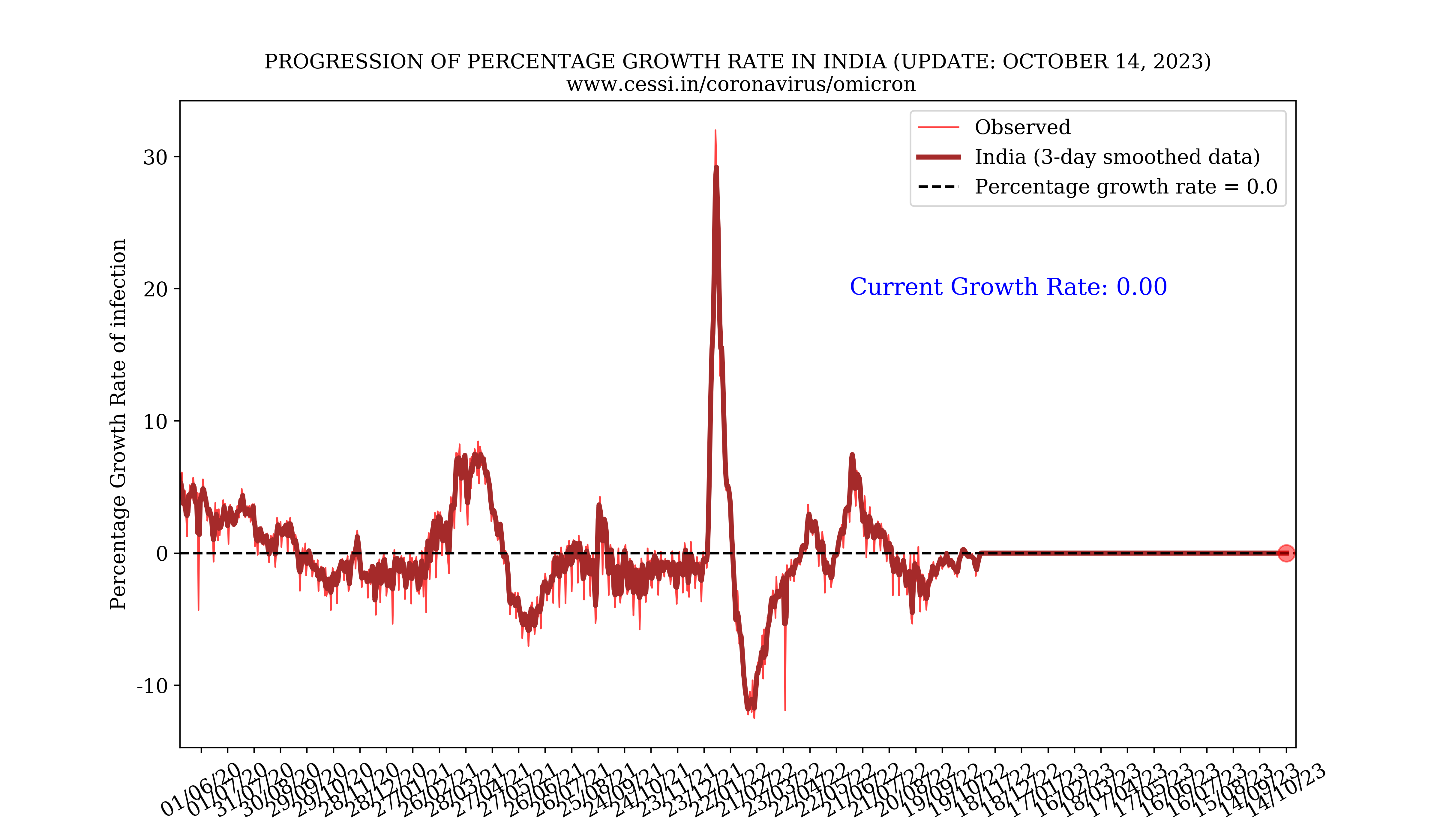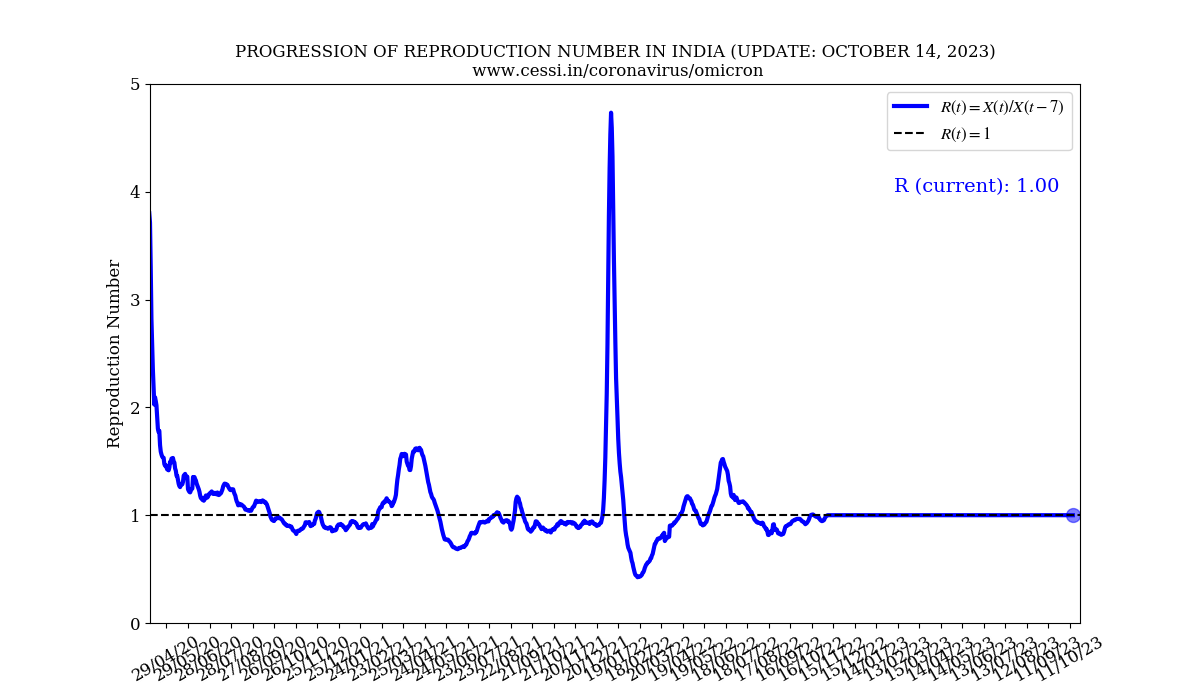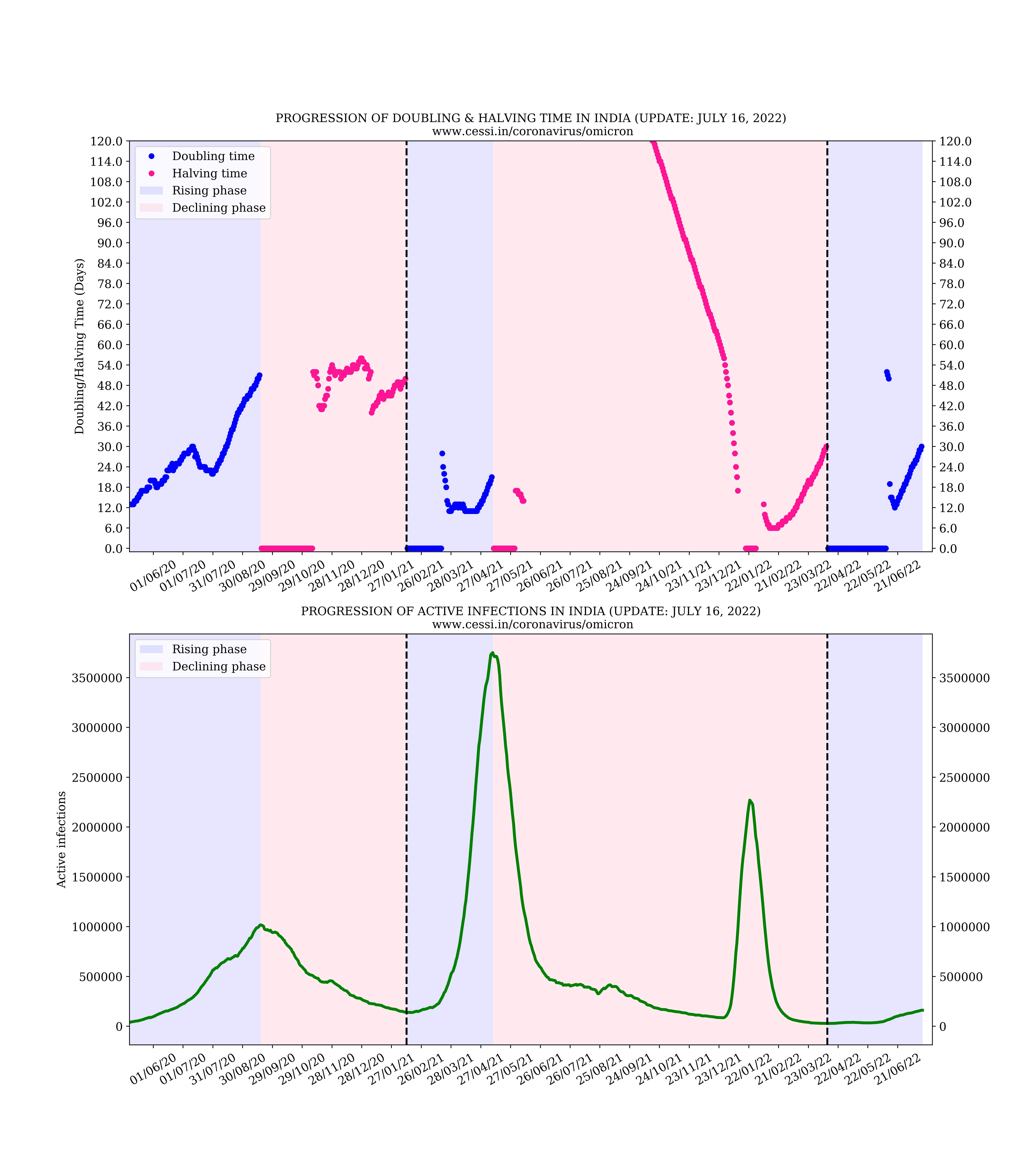CESSI IISER KOLKATA MODELLING FOR COVID19 (OMICRON Variant)
India is facing the challenge of fighting against the new variant of COVID19 B.1.1.529 virus namely OMICRON. This variant is declared to be of concern by the World Health Organization on 26th November 2021. For understanding the progression of this pandemic we at CESSI simulate the scenario based on current observed numbers. For doing this we use the CESSI-nCOV-SEIRD model which proved successful in the previous stage of the pandemic. The initial conditions e. g. the total population of India, number of exposed, infected, recovered and deceased individuals are taken from the available observed data. We take twice the Infected numbers as observed on 30th December 2021 as an initial guess assuming that fewer than actually infected persons are being tested and reported. The simulation is initialized from 30th December 2021. We assess different scenarios with different reproduction numbers corresponding to the early surge observed in different parts of India. We also model two different cases of containment (cumulative impact of social distancing, physical distancing and lockdown). In the first case we simulate with no containment and in the second with 50% containment. The impact of the containment is chosen to arbitrarily take effect from 22nd January 2022. We implement the lock-down function with 50% containment strength. In our SEIRD model different rates (parameters of the model) are set to be σ= 0.143/day, γ= 0.2/day and μ= 0.005/day. β is constrained by the other parameters and varies according to the initial reproduction number (R0). Further details on the epidemiology model developed at CESSI can be found in the "Model" section.
We have analyzed the COVID19 progression for different Indian states and cities as well as for India as a country. Our model-assessed progression of the pandemic can be found in the drop-down menu below.
Important Note: All model outputs depend on certain starting assumptions and governing parameters that have to be reasonably constrained by observations. For the OMICRON variant of the coronavirus pandemic these are still early days and most observational data are under-sampled. Our simulation set-up, modelling assumptions and governing parameters would be updated as and when more reliable constraints are available and a better physical understanding is achieved. Therefore, we advise that any policy actions based on our research should lay more emphasis on the qualitative trends implied in our simulations rather than actual numbers.
Progression of the pandemic in INDIA
Doubling Time and Halving Time
The amount of time taken for the number of infected individuals to double itself is known as Doubling time. Here is an example how the doubling time is calculated. If on day 2 the number of confirmed cases is 50 and it doubled up to 100 on day 14, then doubling time for this case is 12 days which is assigned to day 14 on the curve. This can be calculated during the rising phase of the pandemic (showed in blue shaded region). However, during the declining phase of the pandemic, we can calculate the halving time (showed in red shaded region). For example, if on day 10 the number of confirmed cases is 100 and it came down to 50 on day 21, then halving time for this case is 11 days which is assigned to day 21 on the curve. The bottom panel of the plot shows the progression of active cases which gives context to the above calculation. The vertical dashed lines are placed accordingly to distinguish between the rising phase and the declining phase.
MODELLING AND DATA ANALYTICS TEAM
The team involved in this work consists of faculty, graduate and undergraduate students at the Center of Excellence in Space Sciences India (CESSI) and the Department of Physical Sciences at IISER Kolkata.
Modelling: Shaonwita Pal, Soumyaranjan Dash , Anmol Kumar and Dibyendu Nandi
Webpage: Soumyaranjan Dash
CONTACT
Prof. Dibyendu Nandi
dnandi at iiserkol dot ac dot in
ACKNOWLEDGEMENTS
CESSI is funded by the Ministry of Human Resource Development, Government of India. The research and analysis documented herein utilized the CESSI computational facilities. Soumyaranjan Dash is funded by the INSPIRE program of the Department of Science and Technology, Government of India. Shaonwita Pal is funded by the University Grants Commission, Government of India. Anmol Kumar funded by INSPIRE Scholar scheme of the Department of Science and Technology, Government of India.
